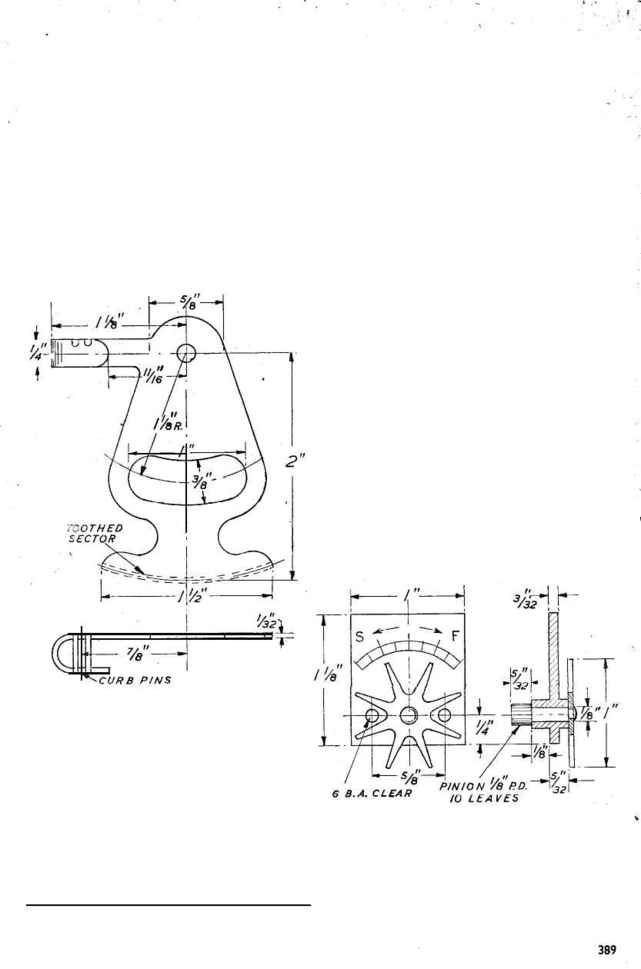
*The " Eureka
" Electric Clock
by " Artificer "
A
READER has pointed out a rather serious
oversight in the details of the balance wheel
which were described in the February 17th
issue. It will be noted that the soft iron portions
of this wheel are arranged to form a three-limbed
electro-magnet, the limbs being connected by
an iron clamp-piece at the top end, and by a
brass clamp-piece at the lower end, so that the
magnetic circuit is left open, except for the prox-
imity of the armature plate below the wheel.
Fig. 14. Regulator quadrant
The object here, of course, is to produce the
maximum attractive efficiency between the mag-
net poles and the armature, and to avoid the stray
field which would be caused by an " open"
magnet. This is all right as far as it goes, but
the correspondent referred to has pointed out
that when the bimetal rim is fitted to the balance
wheel, the inner (steel) component of the rim
will short-circuit the open poles of the magnet
and cause a serious loss of efficiency.
Fig. 15. Regulator pinion, star wheel and rating
plate
As the clock which was restored is not now
available for further examination it is impossible
to-say how this factor was dealt with in practice ;
there is a possibility that the steel part of the rim
and thereby influence the rate of vibration. The
effect is virtually the same as altering the length
of the hairspring, which could not be done in
practice without putting the balance "out of
beat."
*Continued from page 331, " M.E.," March
The details of the " Eureka " clock regulator
17, 1949.
are given in Figs. 14 and 15, but it is considered
was made of a non-magnetic alloy, or that a section
of non-magnetic material was brazed in at the
point adjacent to the lower clamp. It may be
found rather difficult to obtain a suitable piece
of non-magnetic steel to make the rim, but
fortunately there is a much simpler method of
eliminating the short-circuit, which will con-
siderably reduce the loss of efficiency from this
source, and can be applied even if the wheel has
already been fabricated.
The remedy consists in counterboring or
trepanning away the portion of the rim surround-
ing the core at the lower end, to a diameter of.
5/8 in.,which will leave a clear gap of 5/32 in.
all round the core. This operation can be carried
out by means of a cutter mounted on a 3/16in.
bar by a grubscrew, and does not necessitate
dismantling the wheel, except for the removal
of the core and the exciting coil. As the removal
of this metal will affect the balance of the wheel,
it may be replaced by a washer of brass or other
non-magnetic materia!, which need not be
positively fixed in place so long as it is prevented
from rattling about when fitted.
Regulator Gear
In principle, the regulator of the " Eureka "
clock is identical with that of any ordinary watch
or balance clock, consisting of a quadrant mounted
concentric with the balance wheel pivot, and
capable of partial rotation around it, having an
arm fitted with curb pins which control the
motion of the hairspring near its fixed end,
